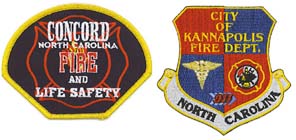Visual Communications - The Ultimate Tactical and Strategic Edge
With the environment that fire departments, law enforcement and other emergency services face in today's world, every edge
that can be obtained is welcomed and needed in dealing with the challenges of public safety.
For fire departments, video
collaboration is one of the simplest, most effective ways to increase productivity, reduce time off-station,
enhance effectiveness and save money along the way.
Law enforcement sees the benefits of video in many of the same ways as well as some unique to police work - supervisors available without leaving their patrol zones, command staff with eyes-on in seconds during a critical incident, investigators "on-the-scene" from the interview room, inter-agency collaborations on multi-jurisdictional cases and many more.
Emergency Management offices can leverage outside resources, get a first hand look at damages in isolated areas, conduct press briefings and grant media "access" to affected areas via video. Emergency managers gain the ability to leverage state and federal resources, bringing outside agencies on the scene to determine the needed response. Remote triage by medical providers servicing staging areas and field hospitals from trauma centers, and supplementing medics from the ambulance while enroute to the ER. The possibilities are endless.
The value of video communications is well
documented and has stood-up to the tests that only real-world applications can provide. Instant
face-to-face contact, connecting fire fighters and rescue personnel in the trenches with the resources that
they need as well as command staff, and unifying communications with other emergency services. It is helping agencies reduce
travel, accelerate decision making, scale knowledge/resources, unifying organizations and saving lives. |

![]()
![]()



